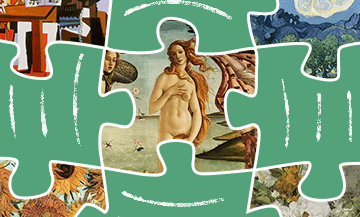In the world of art, it’s important to stand out among numerous talents. The question arises not only about mastery but also about creating your unique personal brand.
How does a painter develop their unique style and become the face of their work? In this article, I will introduce you to the concept of “personal brand” and explain the role it plays in the art world.
5 reasons why an artist needs a personal brand
Let’s start with the basics: a personal brand is individuality, your expertise, and uniqueness in a specific field. Simply put, it is you — your appearance, personality, strengths and weaknesses, expressions, gestures, thoughts, and feelings that you convey to your clients, viewers, or followers. A personal brand helps an artist stand out among many talented creators, adding uniqueness to both the artist and their works. Viewers enjoy not only the process of creating a painting but also closely follow the artist — their emotions, movements, and gaze. It is the artist’s personality that becomes the focal point of attention. |
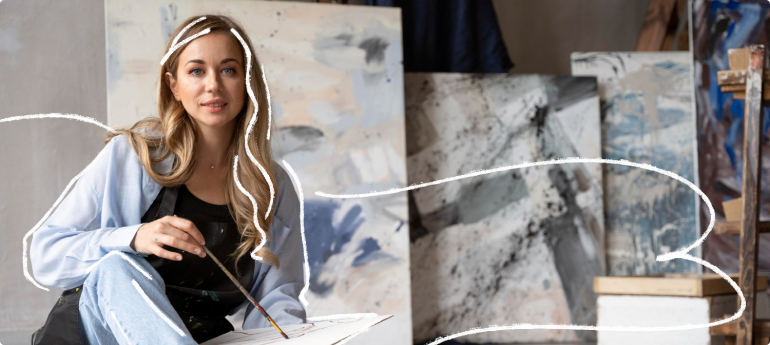
Let's look at five key reasons why every artist should invest in developing their personal brand.
- Uniqueness in the Masses. In a world of millions of creative works, art needs to stand out from the crowd. A personal brand is something unique that allows your creativity to attract attention. A personal brand gives your works unmatched individuality and makes you recognizable even in the most crowded artistic streams.
- Story in Strokes. A personal brand not only creates an impression but also tells an engaging story about the artist. It makes your creative process special, highlighting your inspirations, experiences, and philosophy. Embrace this process and give your creativity a context that will captivate the audience and add depth to your art.
- Audience Attraction. A personal brand serves as a magnet for art enthusiasts. Building a strong personal brand not only forms a circle of admirers but also establishes deep connections with your audience. This interaction can become a source of inspiration and support during the most challenging moments of your creative journey.
- Collaboration Opportunities. A personal brand opens doors for collaboration and partnerships. When your name becomes a brand, other artists, galleries, research projects, and even commercial enterprises show interest in collaborating. Your personal brand can become a bridge connecting you with new opportunities and fruitful exchanges of ideas.
- Stability and Longevity. Finally, a personal brand serves as a solid foundation for your artistic career. It makes you independent of time and fashion trends, creating a stable base for long-term success. Your personal brand is an investment in the future, stability, and recognition in the art world.
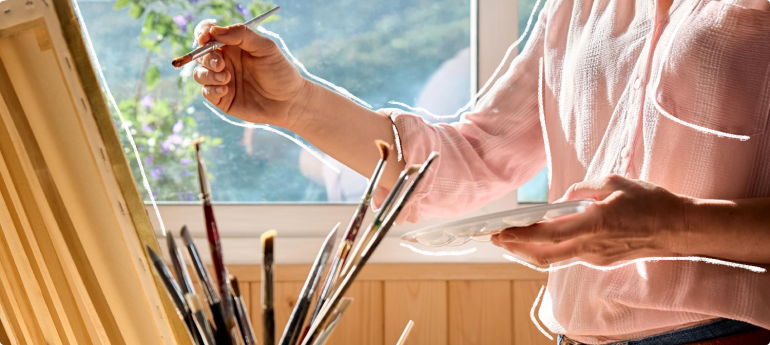
What are the pitfalls in building an artist's brand?
- Authenticity and Identity. Building an artist’s brand requires not only talent but also a deep understanding of oneself. One of the main challenges is maintaining authenticity in a world where every artist strives to stand out. Art must be sincere and reflect the creator’s soul; otherwise, the brand will lose its uniqueness.
- Commercial Balance. Artists face the dilemma of how to preserve the artistic value of their work while making it commercially successful. Whether to follow trends for profit or remain true to their own style is a question that will inevitably become a barrier.
- It Takes Time. Greatness does not happen overnight. One cannot wake up one day and become Van Gogh, no matter how much one wishes for it. According to statistics, initial successes in building a brand often appear only after a year of active work.
- Personal Brand and Personal Life: Where’s the Line? An artist, like any brand owner, becomes a kind of public figure. However, separating personal life from the artist’s image is a delicate issue. One will need to learn how to balance public and private life.
- Risk Assessment is Necessary. There will be results, whether positive or negative, and much depends on your tactics and decisions. A positive result will bring you not only success but also valuable experience to guide you further. On the other hand, a negative result, although disappointing, will also be a valuable lesson.
- Constant Reputation Monitoring is Important. One wrong move can lead to a loss of trust, and rebuilding that trust is a long and arduous process. Therefore, it is crucial to understand that reputation is something so fragile that it will require significant effort and a continuous drive for self-improvement.
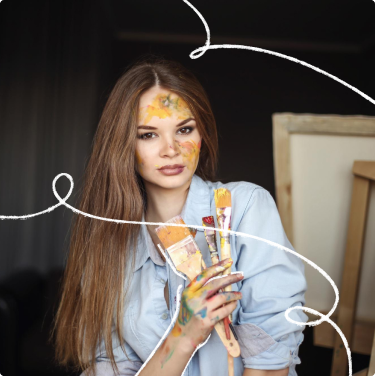

How to make a good impression?
For an artist who creates not only on canvas but also in communication, every moment of the first impression is crucial. How can you create the magic of art around yourself, even when you’re away from your studio?
- Style. The first thing that catches the eye is style. Your clothing should be an extension of your creativity—memorable and inspiring. Experiment with colors and shapes. A unique personal touch in your style can become a magnet for attention, or even better—a spark for dialogue.
- The Art of Storytelling. An artist is not only hands creating wonders on canvas but also a storyteller sharing their journey. Learn to talk about your work in a way that makes each brushstroke a word and color an emotion. Give life to your pieces and vibrancy to your stories, so that everyone who listens to you becomes part of your creation.
- Personal Energy. Art is not only a visual experience but also energy. Confidence, openness, and a love for what you do create a magical atmosphere. Be like the charismatic characters in your work—draw people in with your energy and let everyone admire you.
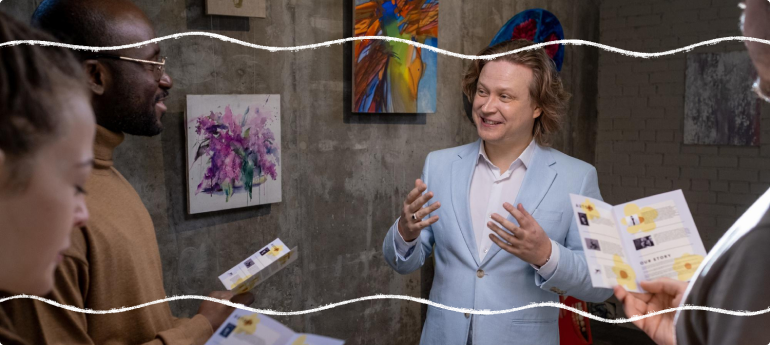
- Creative Meetings. Organize exhibitions of your work or even conduct a workshop. Allow others to not only see but also feel how you work and create. Your participation in public events will help endear you to others and open new horizons.
- Embrace Criticism, Learn. Even great masters never stop learning. Be open to new ideas, experiments, and criticism.
Consider how professionally your profile or website currently looks. Are you sharing valuable information with your audience, or just maintaining minimal interaction?
Is creating vibrant and aesthetic visual content important to you? After all, what better characterizes an artist than their aesthetic sense in images and carefully chosen colors in their social media feed?
The artist’s personal brand and its main attributes
- The artist’s personal brand is built not only on their technique but also on the stories they tell. Each work should carry a certain meaning, transporting the viewer into fascinating narratives. Thus, the artist becomes a storyteller, and their works become the pages of a book.
- Creating a recognizable style. The strength of a personal brand lies in recognition. The artist should strive to develop a unique style, a distinctive signature. This could be a play of colors, a special pattern, or even a specific theme. The uniqueness of the style will make the creator memorable in the eyes of viewers.
- Social activity. An artist’s personal brand is not limited to their artwork alone. Interaction with the public plays an important role as well. Social networks and exhibitions are platforms where the artist can share their inspiration, ideas, and art. Engaging with the audience fosters a community of fans.
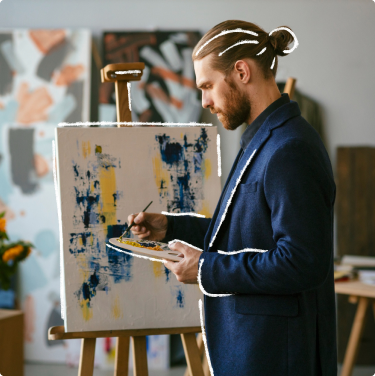

Among the key elements of a personal brand: name/alias, logo, website, social media profiles, handwriting, style, appearance, and much more.
Without a well-thought-out marketing strategy, your path to success will remain just an unfulfilled dream.
Specific goals, wisely chosen promotion channels, and the artist’s core values—all these factors will contribute to establishing you as a prestigious expert in your chosen field.
Artist’s personal brand code: unpacking individuality
The personal brand code consists of factors that set you apart from competitors and affirm your uniqueness.
This code aids in developing a “unique style,” attracting your target audience, and providing appealing opportunities to work on projects aligned with your interests.
Key components of the brand code:
- Positioning — a clear image formed in your audience’s mind. It includes uniqueness, price-quality ratio, and your advantages.
- Mission — the purpose of your personal brand beyond personal gain.
- Vision — strategy for your development and the world around you.
- Values — your worldview and principles (your audience should share your preferences).
- Identity — unified visual image, design, and branding style.
- Reasons for trust — convincing arguments in your favor, alignment of communicated and actual values.
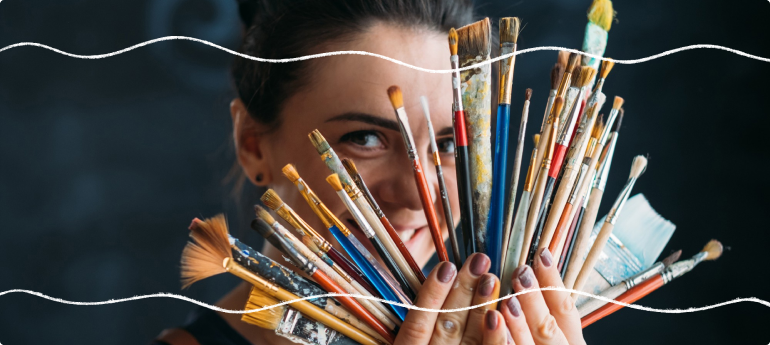
Building an artist’s personal brand using the archetype method
💡 Before we dive into the art of building a personal brand, let’s talk about archetypes. Archetypes are universal symbols and images present in myths, legends, and tales.
Carl Jung, the Swiss psychiatrist and psychoanalyst, proposed the idea of archetypes as part of the collective unconscious shared by all people. Each archetype carries its own meaning and energy, providing an opportunity for a deep understanding of oneself and the surrounding world.
- The artist as an explorer of the self. You can turn to archetypes to reveal your unique story. Start by selecting a few archetypes that reflect your inner world. Perhaps you feel like a magician exploring the boundaries of imagination, or a warrior fighting for your ideas. The choice of archetypes can be both intuitive and conscious, reflecting your dreams, fears, and aspirations.
- Translating archetypes into visual art. Now that you have identified your archetypes, translate this energy into visual art. Use colors, shapes, and compositions to convey the power of the chosen archetypes. For example, if your archetype is the “Wise Old Man,” you might play with warm, earthy tones and use wise lines to reflect the endurance of time.
- Creating a unified style and brand. As you start creating art based on archetypes, a unified style will gradually form, becoming your recognizable brand. This style will reflect your unique vision and personal archetypes, attracting viewers with its individuality and depth.
- The story of your creativity. Ultimately, your personal brand, built on the archetype method, will become the story of your art. Each piece will tell about you, your journey, and your view of the world. This will not only highlight your professional success but also create a deep connection with your audience.
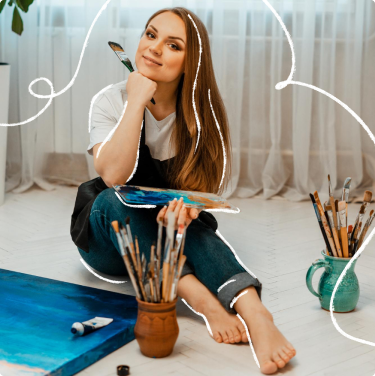

Stages of forming an artist’s personal brand
- Creative self-discovery stage. The first step towards creating a personal brand is diving into the world of oneself. The artist needs to understand their creative preferences, stylistic features, and sources of inspiration. Time for self-discovery will help define the characteristic traits that make the art recognizable.
- Defining uniqueness. What makes your art unique? At this stage, the artist should highlight the key elements of their style that will serve as the foundation for their personal brand. This could be a particular palette, technique, or theme of painting. It’s important to create something that stands out in the eyes of the viewers.
- Visual identity. The personal brand of the artist extends beyond their works and style. Visual identity includes portfolio design, logo, personal style in clothing — everything that creates a cohesive and recognizable image. When viewers see you or your works, they should instantly associate it with your personal brand.
- Active promotion on social media. In the modern world, social media plays a key role in building a personal brand. The artist should actively promote their work, share the creative process and views on art. This helps to build a loyal fan base and expand their influence.
- Participation in exhibitions and other projects. For a personal brand to become truly powerful, it’s important for the artist to actively participate in exhibitions, projects, and collaborations. It’s a great opportunity to present their work to a wider audience.

Where and how to advance?

YouTube — a popular video hosting platform.

Pinterest — great for artists as the volume of visual content here actively competes with Instagram.

Messaging apps: Telegram, Viber, WhatsApp.

Collaboration with bloggers and influencers, whose platforms offer high levels of subscriber engagement.

Participation in industry events and conferences, creating opportunities for networking and drawing attention to your brand.

Conducting webinars for interactive communication with the audience and showcasing expertise in the field.

Maintaining a corporate blog and regularly updating content to keep the audience engaged.

Your own creative website.

Publishing in the media to expand reach and strengthen credibility in your field.
What should an artist post on his social networks?
- Share moments of creating your artworks and let your followers see how your art comes to life.
- Develop series of works dedicated to a specific theme or style.
- Tell stories related to your paintings and inspiration. People love to learn more about artists and their art.
- Start creative challenges among your followers. This could be something like “drawing from a single word” or “reworking a classic piece of art.”
- Show behind-the-scenes of your artistic life — the places where you create, your tools, sources of inspiration.
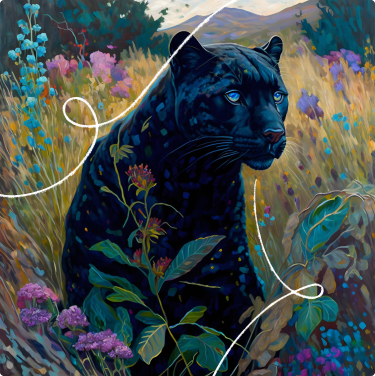
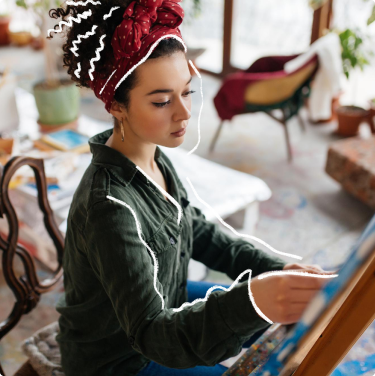
What are the options for engaging people?
Promoting a business online can be achieved through various methods, with effectiveness depending on a well-thought-out strategy.
Among them:
- Targeted advertising.
- Active use of SFS (mutual promotion).
- Guest posts in various communities.
- SEO optimization.
- Presence in professional communities.
- Interviews with celebrities.
Top mistakes in forming an artist’s personal brand
- Publish stories and posts on schedule. If your content is interesting, your audience will engage with it at any time.
- Think that the main thing is to launch ads correctly. It’s not just about the advertisement itself, but what you are promoting. Focus on the quality of your creativity and content.
- Ignore followers. It’s important to actively respond to comments and messages from people to show your engagement and trust in your audience.
- Work without a content plan. Define at least general themes you would like to cover. Observe how your followers react to your content—are they interested?
- Fear haters. Haters on social media are common. Don’t focus on them, but do take constructive criticism into account. It will help you improve.
- Blindly follow trends. Trends can sometimes help achieve immediate success, but not more. You need to find your unique touch—something that distinguishes you from other artists. Then people will want to stay with you longer.
- Be shy about managing social media. Modesty is a noble quality, but excessive modesty can lead to underestimating your own creativity. An artist should learn to assess their successes appropriately and actively share their achievements with the world.
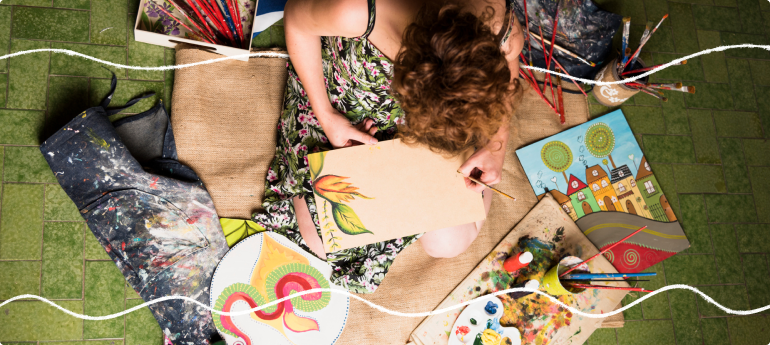
Artist's personal brand: examples of successful branding
Reflection of the Soul in Works: Emma Haxley
Emma Haxley, a contemporary artist from the UK, embodies something more than just beautiful images in her work. She strives to create an atmosphere where each piece is a profound narrative of her inner world and perspective on the surrounding reality.
Emma actively uses social media, sharing her creative process and giving followers a chance to peek into her studio and see how her masterpieces come to life.
Play of Light and Shadow: David Næsted
David Næsted, a Canadian artist, brings a unique vision of the play of light and shadow to the art world. His works not only depict scenes and objects but create a sense of living presence.
In his personal brand, David focuses on the process of creating each painting, allowing viewers to immerse themselves in the magic of creativity. This makes his art an integral part of his personal brand—a mark he has made in the world of artistic aesthetics.
Interactivity of Art: Oliver Jefferson
Oliver Jefferson, an Australian artist, literally breaks the boundaries of traditional art. His works extend beyond two-dimensional canvases; they come to life in three-dimensional installations and even virtual reality.
Oliver uses the interactivity of art on social media as a key element of his brand. Emma Haxley, David Næsted, and Oliver Jefferson—each of them creates a unique stroke in this palette of personal brands, making the world brighter and richer. They are not just artists; they are personal brands leaving their mark in the eternity of art.
However, in addition to expressive style and appealing personal brands, it is important to maintain a passion for creativity and continually refine one’s craft. Best of luck!
Question-answer
- Define your style. Develop a unique style that is characteristic of you. This could be a specific technique, color palette, theme, or even approach to art. Focus on what makes you a unique artist.
- Create a portfolio. Prepare a high-quality and diverse portfolio with all your best works. Ensure its availability online, such as on your own website or social media platforms.
- Be active on social media. Use popular platforms like Instagram, Twitter, or Pinterest to showcase your creations.
- Blog or video content. Create a blog or YouTube channel where you can share your experiences, discuss your creative process, and offer advice to other artists.
- Participate in exhibitions and events. Take part in art exhibitions, festivals, and other events.
- Personal branded merchandise. Consider creating personal branded merchandise: a logo, signature, or even unique artistic touches.
- Learning and sharing experiences. Participate in workshops, teach others, and share your experience.
- Reviews and recommendations. Ask friends, clients, and colleagues to leave reviews about your work. Positive recommendations can significantly strengthen your personal brand.
- Personal style and approach. Defining your own artistic style helps you stand out from the crowd and create a unique visual impression.
- Portfolio. A high-quality and diverse portfolio demonstrates the versatility of your creative potential.
- Presence on social media and online platforms. Activity on social media, showcasing the creative process, and interacting with the audience all contribute to building loyalty and attracting attention to your work.
- Personal brand visually and textually. Creating a unique logo, signature, color palette, and even choice of fonts can strengthen your brand recognition. The textual part is also important — it represents your artistic “self,” expressing your ideas and values.
- Collaboration and project participation. Participating in joint projects with other artists, exhibitions, and events in the art community helps expand your network and increase visibility.
- Personal image. Your image as an artist is also part of your personal brand. It includes your style of dress, manner of communication, and even the choice of places you frequently visit.
- Education and professional development. Continuous learning, participating in workshops, and keeping up with current art trends will help you not only grow but also strengthen your status as an expert in your field.
- Regularly update your portfolio by adding both new and best works. Upload them to popular art platforms: Behance, Instagram, DeviantArt.
- Use social media to spread your art. Regularly post new works, share your creative process, respond to comments, and maintain communication with followers.
- Create a blog where you can talk about your experiences, techniques, and inspirations.
- Collaborate with other artists and support collaborations.
- Build your personal website where you can showcase your portfolio, tell about yourself and your artistic journey, and post news and updates.




